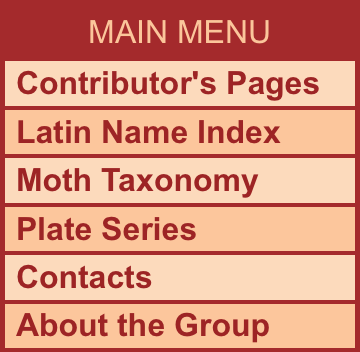New Photographs
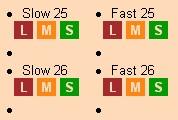
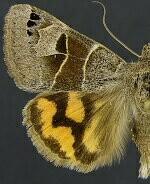
8627 - Drasteria edwardsii
© Tom Dimock - CA
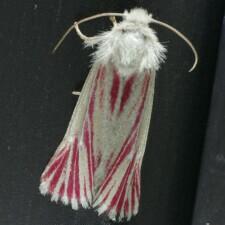
9733 - Lythrodes ventaus
© Jillian Cowles - AZ
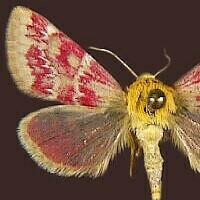
11107.1 - Schinia sanrafaeli
Chuck Harp Collection

0922 -- Parsnip Webworm
Nolie Schneider - ON
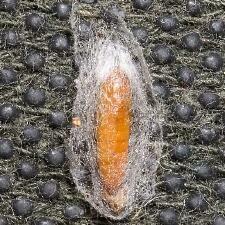
6019 -- Plodia interpunctella
Mike Boone - SC
|
Since this page was the last updated many changes have been taking place. The most significant of these will be seen on the Plates Series for the families that come after Geometridae. MPG is being converted to a database operation, a much more efficient way of doing things than was the case where thousands of html pages needed to be created and maintained manually. Under the new database system being developed with the marvelous contributions of Mike Boone, just a few "smart script programs" replace those thousands of pages and ensure that every photograph in the database appears on pages appropriate for it.
Large, Medium or Small Pages? As each family is converted to database operation you will see the options pictured at left for selecting page sizes. If you have high-speed Internet access you will probably want to select the larger pages. If you are restricted to dial-up access at slower modem speeds you will probably wish to use the small page option. We need feedback from users; if the small pages are still too large for you, please let us know. If there is enough demand for still smaller page sizes a change can be made.
New Checklists. Since its inception MPG has been following the Hodges Checklist (1983). Names in that checklist were, for many families, current as of the end of 1978. During the last 30 years thousands of changes in nomenclature have come about. Many species listed at that time have been "lumped" or become synonyms of other species. Many new species have been described since then. Some families have been separated into two or more families, and new arrangements of subfamilies have come about. This is particularly noticed in the superfamily Noctuoidea.
With the conversion to database operation we are able to modernize the checklist based on the contribution by Don Lafontaine of one covering the Noctuoidea. At present the plates will display this subfamily in the older Hodges sequence. Changes since 1983 may be seen in this Taxonomic Notes listing. Eventually we will have a separate plates menu for families which may be displayed in phylogenetic sequence.
New Photographs Received. All new photos of living moths for those families above Geometridae, received through April, have been entered in the database and now appear on the plates. New photos (2007) of geometrids and micros will appear in the coming months as the balance of the files are converted. All photos of larvae are now in the database and there will be a significant effort to increase our coverage of them. At present we have photos of more than 3,000 species of living moths and more than 7,000 species represented by spread specimens.
Photos of Larvae Needed. Now that we have a separate database table for larvae we have the opportunity to add some nice features pertaining to them. We need lots of photos of them, particularly of those that have been well identified. One feature that I hope to see developed is a special page that, through use of a color key, will enable anyone to select features seen in a caterpillar and search for the closest matching photographs in the database. To make such a tool effective we'll need lots of decent photos that can be properly run through the process and have color-keys attached to them. If you are a larva specialist, please let us hear from you. Machele White will be our initial larva editor and will be happy to share the task of building this side of MPG. I hope to discuss this topic at the meeting of the Lepidopterists' Society at Mississippi State in June.
Contributor's Pages. We continue to receive numerous contributions of photos of both living moths and spread specimens. Jillian Cowles has chipped in with photos of living moths, many of them new to MPG, from Vail, Arizona. Ken Osborne has sent us a small collection of photogenic spread specimens from western areas. Tom Dimock has been building a sizable collection at MPG of fine specimens from southern California and the southwest that he has collected, spread and photographed. A number of these have been described only in the last few years and are new to the Internet. Many of these fill in blank spaces in the MPG collection. Don Lafontaine has begun also to fill in many blank spaces with photographs of specimens from the Canadian National Collection. Don has also been scrutinizing the plates for possible errors, a most valuable service toward making our plates as accurate as possible. Last October, with the assistance of Debbie Mathews and others, I was able to photograph Geometrids at McGuire Center in Florida. Some of these have been replaced by better photos from Bob Belmont and Jim Vargo who continue to add to their impressive collections at MPG.
Thanks to Everyone..... who has contributed in any way to building MPG. It is not only the contributors of photographs who build the website. Just as important are those who serve as Referees, help to identify the many unidentified moths that are photographed, contribute checklist information, spot errors, and critique the entire operation. Without this constructive criticism we can't improve.
I want especially to thank Richard L. Brown, Director of Mississippi Entomological Museum, and Todd Hall of Mississippi State's Information Technology Infrastructure, for enabling our transition to a modern database set-up. This transition will enable us to open the website to additional contributions by volunteer editors.
Most importantly, I simply can't say enough to thank Mike Boone (whom many of you know from BugGuide.Net) for the many hours that he has spent working on the .php programs that make the new system work. He has cheerfully solved problem after problem, not the least of which has been my cantankerous nature. Thanks, Mike.
Welcome New Contributors:
David Arbour (AR), Marius Aurelian (BC), Libby & Rick Avis (BC), Robert Behrstock (AZ), Ashley Bradford (VA), Julieta Brambila (FL), Lyle Buss (FL), Sheila Chambers (OR), Becka Crook (FL), Gerald Donehew (TX), Bill Eaker (IL), Kevin Hall (WA), Richard Healy (KY), Betsy Higgins (MA), Mary Hopson (AK), Maury Heiman (TX), Craig Hurst (ON), Tim Johnson (OR), Scott Justis (VA), Philip Kline (AZ), Adam Kraiterman (MA), Don Lafontaine (ON), Jean-François Landry (ON), Vincent Lucas (FL), Rene Lahousse (FR), John Maxwell (NJ), Donald Putnam (GA), Martha Reinhardt (NH), Davie Rolnick (VT), Stephanie Sanchez (FL), William Taft (MI), Rennie Talbert (WV), Valerie & Justin Valleau (TX), Karl Volkman (WA), Ron Votaw (TX).
Got the Mothing Bug? Add your photographs to the collaborative effort here at Moth Photographers Group and help build the photobase that helps everyone interested in moth identification. Are You a Moth Specialist? Add an entry in your CV by refereeing a family or subfamily here, and help build the accuracy of the photo library.
|
